Properties of Fine-Grained Cement Composites, with a Special Emphasis on Cement Screeds in Floor Constructions
Abstract
:1. Introduction
2. Experimental Research
2.1. Experimental Research Program
- Constant ratio of binder to aggregate to avoid negative effects on certain physical–mechanical properties of the mortar;
- Consistency of cement screeds that should correspond to the description “moist as soil”, leading to an assumed water–cement ratio of 0.38;
- Assumed density of freshly installed mortar;
- Addition of micro-reinforcement in the amount of 1.0 kg/m3;
- Use of electrofilter ash as a substitute for cement in the amount of 20%;
- Addition of plasticizer at a ratio of 1% by weight of cement.
- Consistency;
- Density.
- Compressive strength;
- Flexural strength;
- Dynamic modulus of elasticity;
- Shrinkage.
- CEM I 42.5 R (Lafarge Beočin Cement Factory, 21300 Beočin, Serbia);
- Aggregate (“Moravac”, fraction 0/4 mm, river Morava, Serbia);
- Fly ash (Kolubara Thermal Power Plant, 11563 Veliki Crnjani, Serbia);
- Polypropylene fibers (type: monofilament, wavy fibers, length 12 mm, Sika Srbija, 22310 Šimanovci, Serbia);
- Plasticizer (“Sika Estriplast”, Sika Srbija, 22310 Šimanovci, Serbia).
- A—mortar mixture with ordinary Portland cement as the binder;
- B—mortar mixture with electrofilter ash as a partial replacement for cement and superplasticizer in its composition.
- A-I series—standard cement mixture;
- A-II series—cement mixture with the addition of microfibers;
- B-I series—cement mixture with electrofilter ash and superplasticizer;
- B-II series—cement mixture with electrofilter ash, superplasticizer, and the addition of microfibers.
2.2. Component Materials and Method
2.2.1. Cement
2.2.2. Aggregate
2.2.3. Mineral Additive
2.2.4. Polypropylene Fiber
3. Properties of the Tested Mortars
3.1. Mix Proportion Design
3.2. Consistency
- V0 is volume before vibration (V0 = 5.5 L);
- V1 is volume after vibration;
- t is vibration time in seconds.
3.3. Density
3.4. Compressive Strength
3.5. Flexural Strength
- fzs—Flexural strength (MPa);
- Pgr—Breaking force (KN);
- a—Length of the side of the square (cross-sectional area of the sample) (m);
- l—Span length (m).
3.6. Dynamic Modulus of Elasticity (ED)
3.7. Shrinkage
4. Results and Discussion
4.1. Analysis of the Results of Testing Mortar in the Fresh State
4.2. Analysis of the Results of Testing Mortar in the Hard State
4.2.1. Flexural and Compressive Strength
- The use of polypropylene fibers leads to an increase in the flexural strength values in series A-II (34.1%) compared to A-I, which can be explained by the fact that better adhesion with the fibers is achieved within the mortar matrix, resulting in improved resistance to bending;
- The application of fibers results in an increase in flexural strength values (17.77%) in series containing electrofilter ash B-II compared to B-I, although this difference is less prominent in these series;
- The flexural strength values of series B-I and series A-I differ by 5.78%. The addition of fly ash does not significantly affect the reduction in flexural strength values, which is in line with studies conducted by other authors [25].
- The series of mortar mixtures for cement grouts containing electrofilter ash B-I and B-II record a decrease in compressive strength of 23.28% and 25.74%, respectively, compared to series A-I and A-II that do not contain electrofilter ash as a partial replacement for cement;
- The application of polypropylene fibers causes an increase in compressive strength values for series A-II (7.93%) and series B-II (5.81%) compared to the series A-I and B-I;
- Mortar mixtures containing micro-reinforcement (series A-II and B-II) exhibit higher strengths compared to the standard (A-I and B-I) by approximately 10%, which is consistent with studies by other authors [26];
- By replacing cement with electrofilter ash in the amount of 20%, along with the addition of polypropylene fibers, the compressive strength obtained is lower by 14.17% compared to traditionally prepared mortar mixture for cement grouts, represented by series A-I.
4.2.2. Dynamic Modulus of Elasticity
- The results of testing the dynamic modulus of elasticity of treated mortar mixtures at the age of 28 days show that series containing electrofilter ash have a lower dynamic modulus of elasticity by 26.72% and 26.26%, respectively. This is in line with claims made by other authors that electrofilter ash has a pronounced impact on reducing the values of the modulus of elasticity [27];
- The addition of synthetic fibers in the series has a minimal impact on the change in the dynamic modulus of elasticity. In both series A and B, samples containing fibers exhibit only a slight increase in the dynamic modulus (the largest percentage difference being 0.5%), which can be primarily explained by the low percentage participation of microreinforcement within the cement matrix.
4.2.3. Shrinkage
5. Conclusions
Author Contributions
Funding
Data Availability Statement
Acknowledgments
Conflicts of Interest
References
- Radulović, R.; Muravljov, M.; Denisenko, I. Quality of a cement screed prepared and applied in a traditional way. Build. Mater. Struct. 2010, 53, 52–60. [Google Scholar]
- Radulović, R.; Jevtić, D.; Radonjanin, V. The properties of the cement screeds with the addition of Polypropylene fibres and the shrinkage-reducing admixture. Build. Mater. Struct. 2016, 59, 17–35. [Google Scholar] [CrossRef]
- Alani, J.; MacMullen, J.; Telik, O.; Zhang, Z. Investigation into the thermal performance of recycled glass screed for construction purposes. Constr. Build. Mater. 2012, 29, 527–532. [Google Scholar] [CrossRef]
- Moreira, A.; Antonio, J.; Tadeu, A. Lightweight screed contaning cork granules. Cem. Concr. Compos. 2014, 49, 1–8. [Google Scholar] [CrossRef]
- Boehme, L.; Novakova, I.; Hubacek, A. Assessment of fine recycled concret aggregate in cement-based flowscreed. In Low-Tech and High-Tech Materials and Technologies for Sustainable Buildings, Proceeding of Conference “Central Europe towards Sustinable Building 2013”: Sustainable Building and Refurbishment for Next Generations; Faculty of Mechanical Engineering Czech Technical University in Prague: Prague, Czech Republic, 2013; pp. 1–10. Available online: https://www.cesb.cz/cesb13/proceedings/3_materials/CESB13_1131.pdf (accessed on 18 March 2024).
- Zobal, O.; Holčapek, O.; Reiterman, P. Frost Resistance of Concrete Screed with the Fly Ash Addition. Key Eng. Mater. 2016, 677, 80–85. [Google Scholar] [CrossRef]
- Matos, A.M.; Sousa-Coutinho, J. Feasibility of Non-Remanufactured Waste Bottle Glass as Supplementary Cementitious Material. Appl. Sci. 2024, 14, 2004. [Google Scholar] [CrossRef]
- Radulović, R.; Marković, L.; Miletić, M.; Marković, L.; Radojičić, V.; Elezović, N. Sustainability aspect of possible material substitution in construction industry. Therm. Sci. 2023, 27, 4961–4973. [Google Scholar] [CrossRef]
- Juenger, M.C.G.; Snellings, R.; Bernal, S.A. Supplementary cementitious materials: New sources, characterisation, and performance insights. Cem. Concr. Res. 2019, 122, 257–273. [Google Scholar] [CrossRef]
- Ajayi, B.L.; Babafemi, A.J. Effects of Waste Plastic and Glass Aggregates on the Strength Properties of Ambient-Cured One-Part Metakaolin-Based Geopolymer Concrete. Appl. Sci. 2024, 14, 1856. [Google Scholar] [CrossRef]
- Tawfik, M.; El-said, A.; Deifalla, A.; Awad, A. Mechanical Properties of Hybrid Steel-Polypropylene Fiber Reinforced High Strength Concrete Exposed to Various Temperatures. Fibers 2022, 10, 53. [Google Scholar] [CrossRef]
- Acosta-Calderon, S.; Gordillo-Silva, P.; García-Troncoso, N.; Bompa, D.V.; Flores-Rada, J. Comparative Evaluation of Sisal and Polypropylene Fiber Reinforced Concrete Properties. Fibers 2022, 10, 31. [Google Scholar] [CrossRef]
- Monazami, M.; Gupta, R. Influence of Polypropylene, Carbon and Hybrid Coated Fiber on the Interfacial Microstructure Development of Cementitious Composites. Fibers 2021, 9, 65. [Google Scholar] [CrossRef]
- Signorini, C.; Volpini, V. Mechanical Performance of Fiber Reinforced Cement Composites Including Fully-Recycled Plastic Fibers. Fibers 2021, 9, 16. [Google Scholar] [CrossRef]
- Muravljov, M. Osnovi Teorije i Tehnologije Betona; Građevinska knjiga: Beograd, Serbia, 2010; ISBN 978-86-395-0614-8. [Google Scholar]
- SRPS EN 12350-3:2019; Testing Fresh Concrete—Part 3: Vebe Test. Institute for Standardization of Serbia: Beograd, Serbia, 2019.
- SRPS ISO 6276; Concrete, Compacted Fresh—Determination of Density. Institute for Standardization of Serbia: Beograd, Serbia, 1997.
- SRPS EN 1015-11:2019; Methods of Test for Mortar for Masonary—Part 11: Determination of Flexural and Compressive Strength of Hardened Mortar. Institute for Standardization of Serbia: Beograd, Serbia, 2019.
- SRPS EN 12390-13:2021; Testing Hardened Concrete—Part 13: Determination of Secant Modulus of Elasticity in Compression. Institute for Standardization of Serbia: Beograd, Serbia, 2021.
- Šahinagić-Isović, M.; Markovski, G.; Ćećez, M. Deformacije skupljanja betona-uzroci i vrste. Građevinar 2012, 64, 727–734. [Google Scholar]
- SRPS B.C8.029:1979; Cements—Dry Shrinkage of Cement Mortars. Institute for Standardization of Serbia: Beograd, Serbia, 2020.
- Jevtić, D.; Zakić, D. Fiber reinforcement mortars and concretes: The possibilities of improvement physical—Mechanical properties. Constr. Build. Mater. 2006, 49, 35–44. [Google Scholar]
- Lane, R.O. Effects of Fly Ash on Freshly Mixed Concrete. Concr. Int. Des. Constr. 1983, 5, 50–52. [Google Scholar]
- Rudzinski, L. Effect of Fly Ashes on the Rheological Behavior of Cement Pasts. Mater. Struct. Res. Test. 1984, 17, 369–373. [Google Scholar]
- Despotović, I.; Ristić, N.; Grdić, Z.; Topličić-Ćurčić, G. Mogućnost Primene Elektrofilterskog Pepela i Recikliranog Agregata u Samougrađujućem betonu kao Značajan Doprinos Ekološkom Graditeljstvu; Građevinski Materijali u Savremenom Graditeljstvu: Beograd, Serbia, 2015. [Google Scholar]
- Jevtić, D.; Zakić, D. Uticaj vrste i količine polipropilenskih vlakana na mehanička svojstva kompozita tipa maltera i betona. Savez Inženjera Metal. Jugosl. 2002, 39–50. [Google Scholar]
- Radonjanin, V.; Malešev, M.; Marinković, S. Mogićnost primene starog betona kao nove vrste agregata u savremenom građevinarstvu. Zaštita Mater. 2010, 51, 178–188. [Google Scholar]
- Chindaprasirt, P.; Homwuttiwong, V.; Sirivivatnanon, V. Influence of fly ash fineness on strength, drying shrinkage and sulfate resistance of blended cement mortar. Cem. Concr. Res. 2003, 34, 1087–1092. [Google Scholar] [CrossRef]
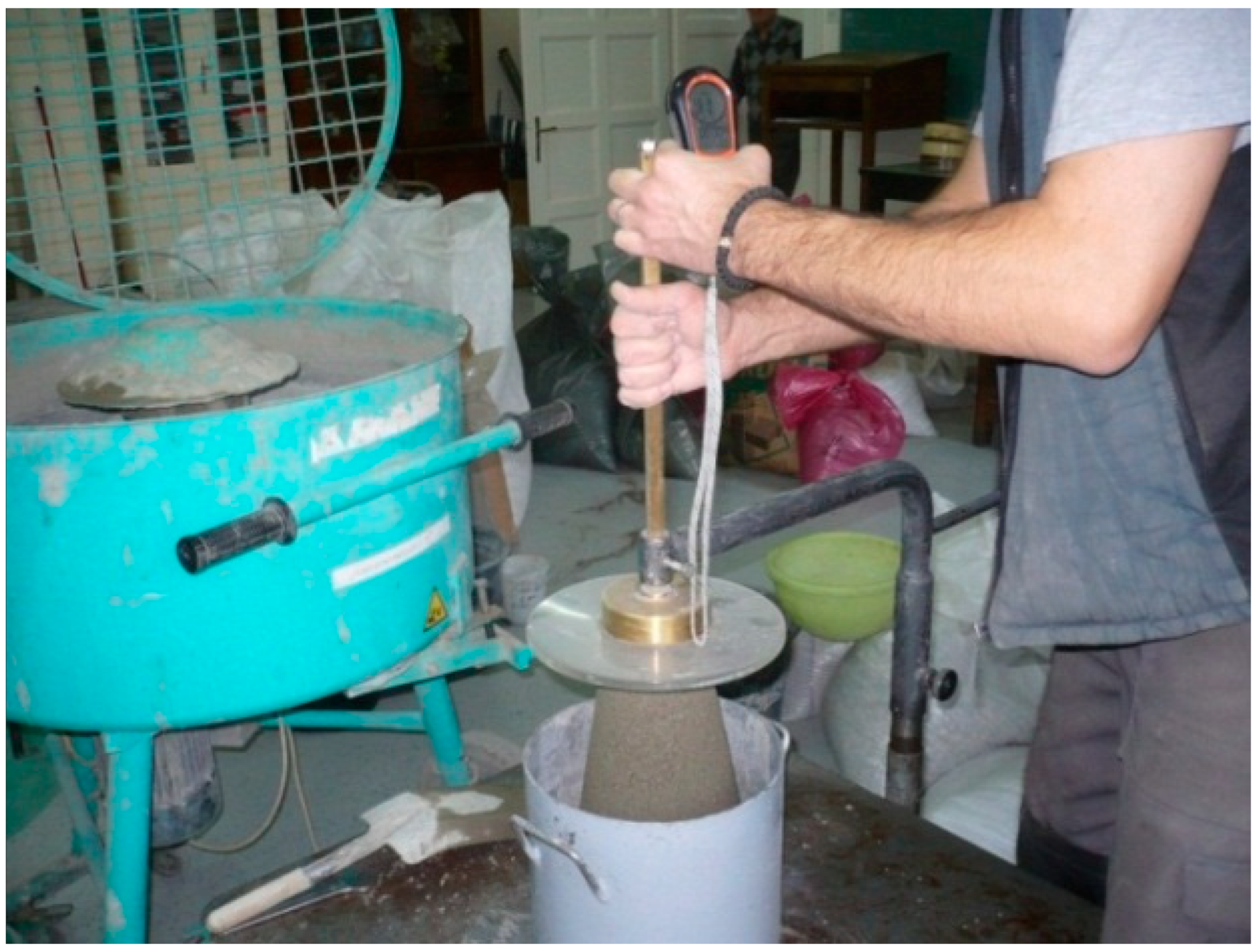

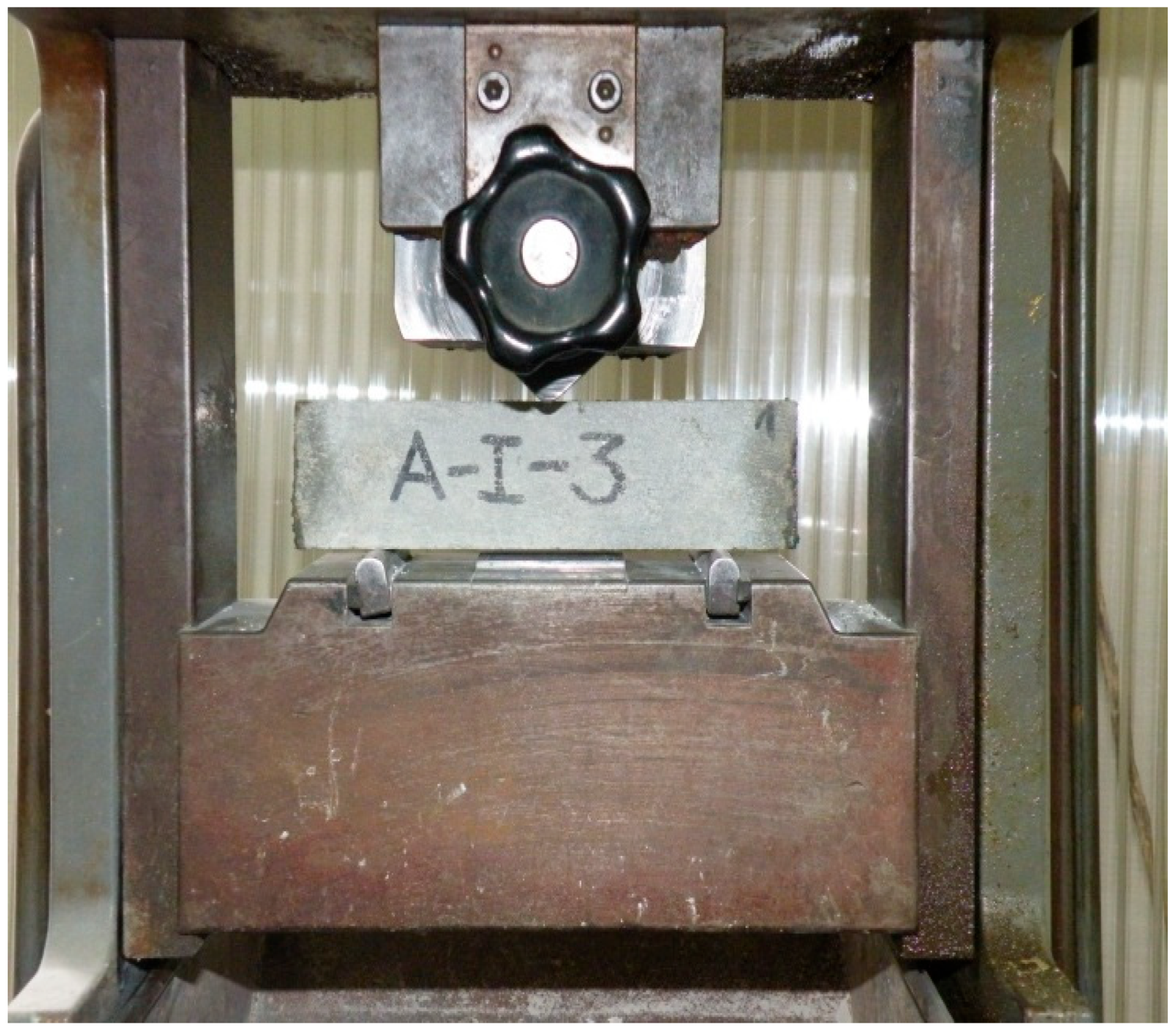
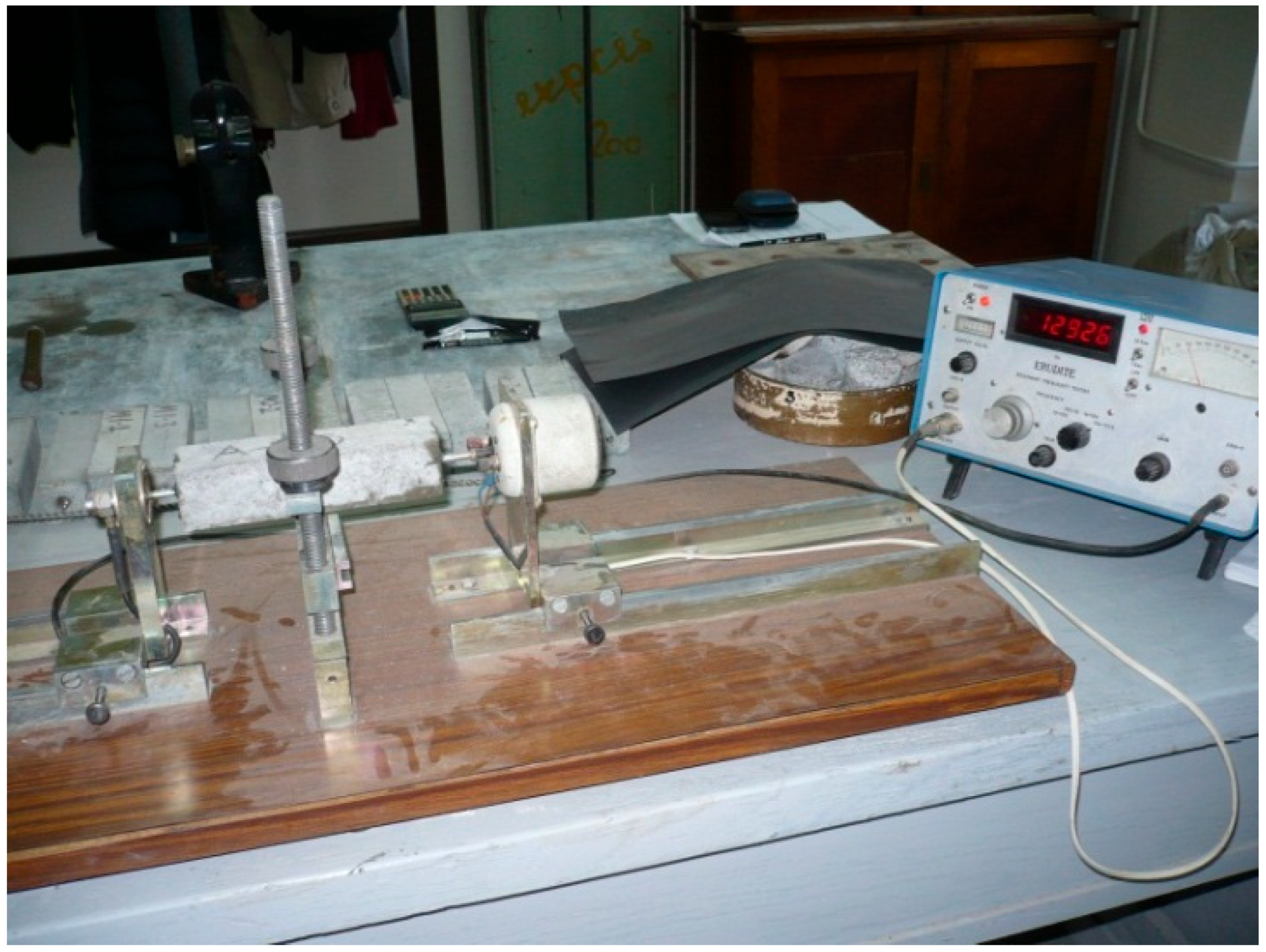
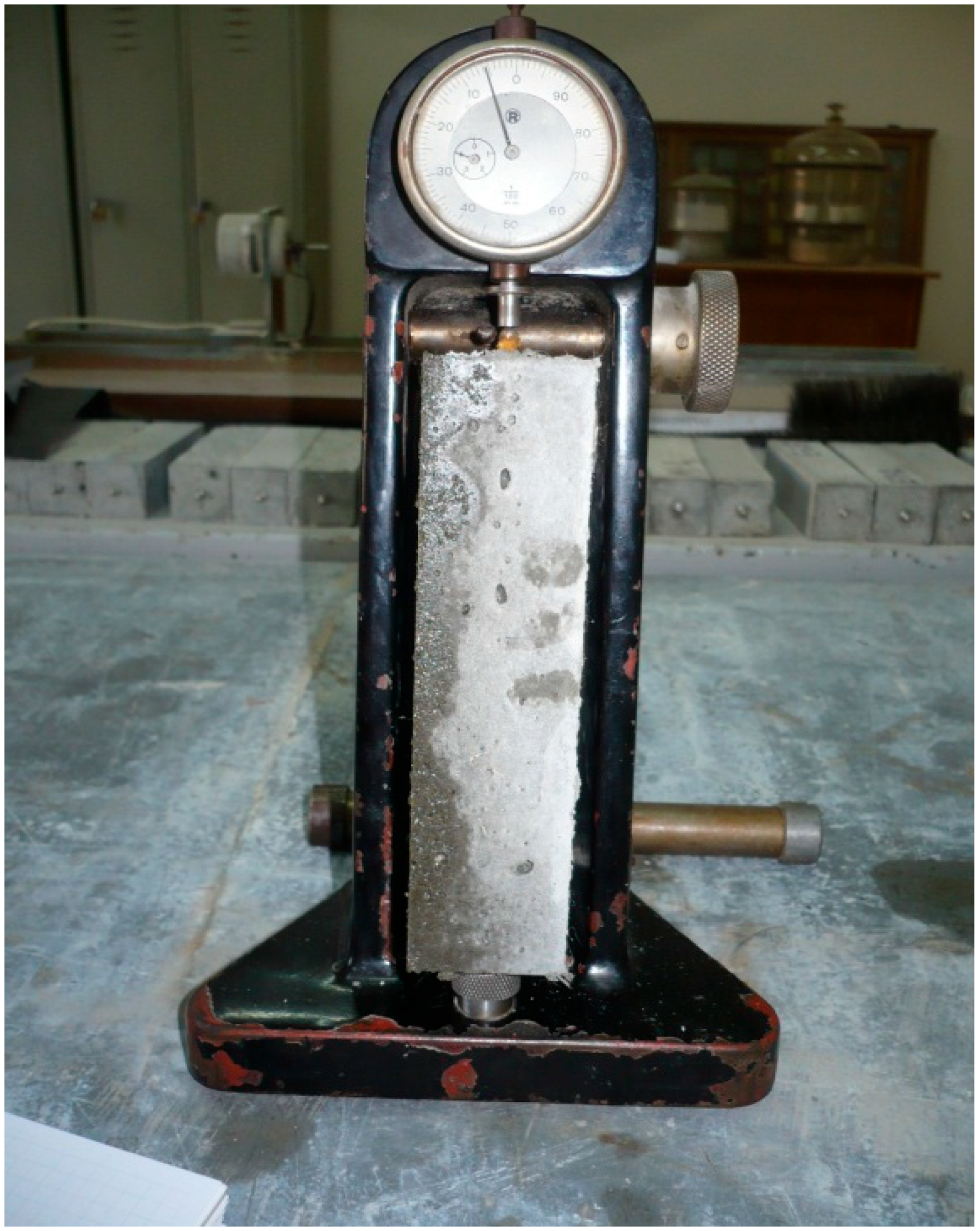
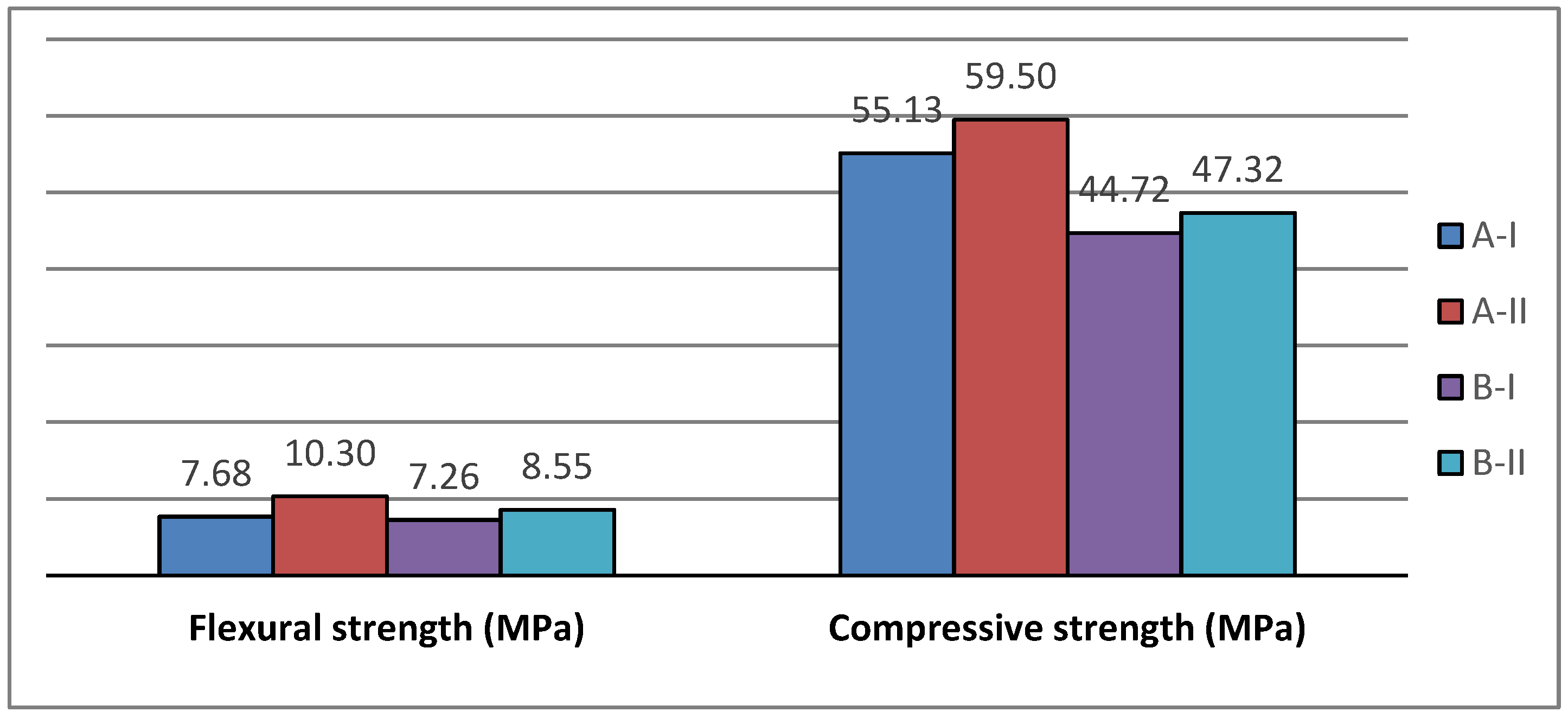

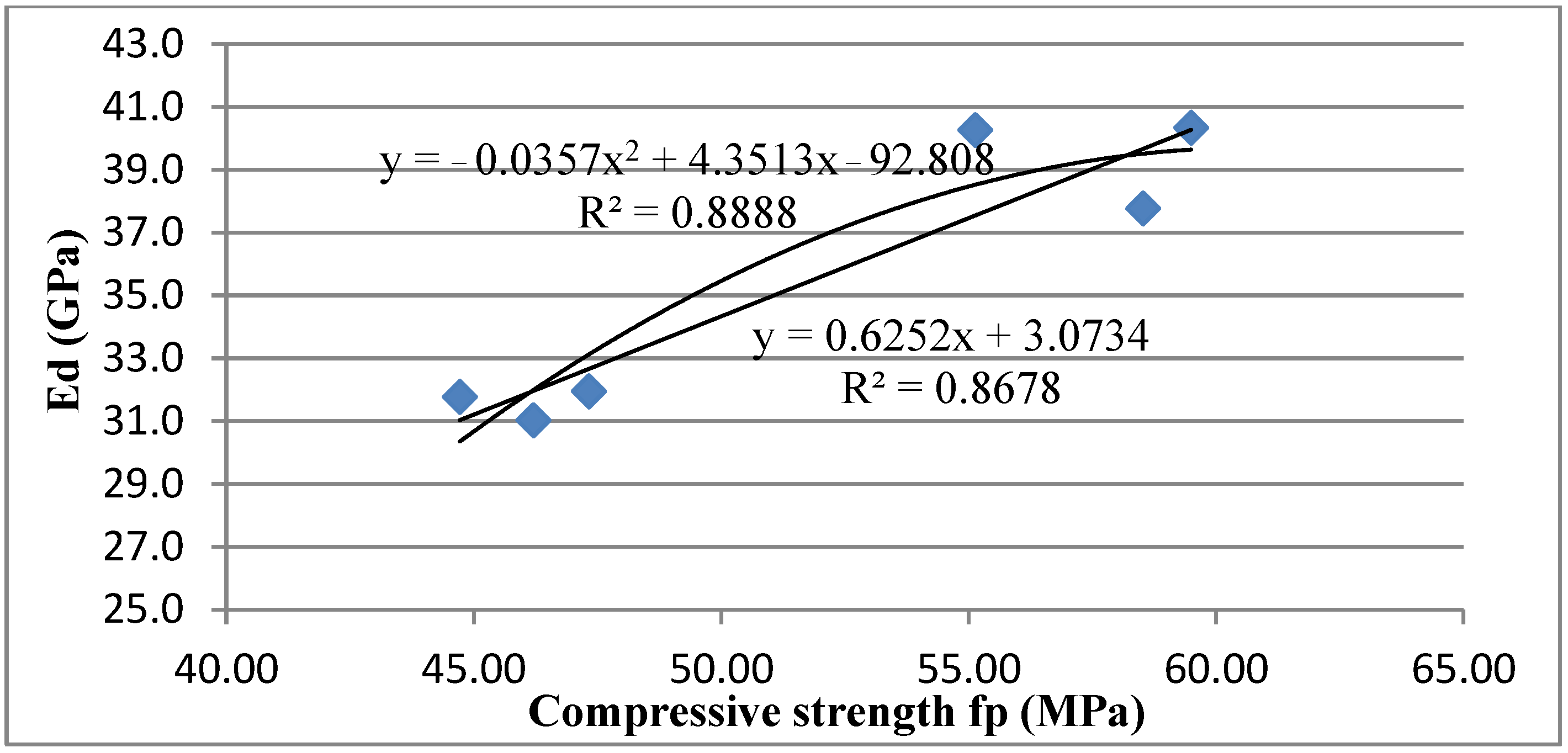

| Property | CEM I 42.5R | |
|---|---|---|
| Grinding fineness | residue on site 0.09 mm [%] | 0.2 |
| Fineness (Blaine) [cm2/g] | 3780 | |
| Density | loose state [kg/cm3] | 900 |
| compacted state [kg/cm3] | 1450 | |
| Cement setting time | Initial setting time [min] | 180 |
| Final setting time [min] | 235 | |
| Soundness | (Le-Chatlier) [mm] | 0.5 |
| Compressive strength | 3 Days strength [MPa] | 33.7 ± 0.8 |
| 28 Days strength [MPa] | 59.5 ± 1.1 | |
| Tensile strength | 3 Days strength [MPa] | 6.1 ± 0.1 |
| 28 Days strength [MPa] | 9.1 ± 0.7 |
| d (mm) | Bottom | 0.125 | 0.25 | 0.5 | 1 | 2 | 4 | 8 |
|---|---|---|---|---|---|---|---|---|
| Y (%) | 0 | 1.8 | 20.4 | 66.7 | 83.4 | 95.9 | 98.2 | 100 |
| Parameter | Unit | Value |
|---|---|---|
| loss on ignition | % | 3.09 |
| SiO2 | % | 58.60 |
| Al2O3 | % | 21.92 |
| Fe2O3 | % | 5.97 |
| CaO | % | 6.12 |
| MgO | % | 1.77 |
| Na2O | % | 0.37 |
| K2O | % | 1.50 |
| Polypropylene Fibers | Property |
|---|---|
| Material | Polypropylene |
| Fiber Type | Monofilament |
| Cross-sectional Shape | Circular |
| Diameter d [mm] | 0.04 |
| Length l [mm] | 12 |
| Aspect Ratio l/d | 300 |
| Specific Mass γs [g/cm3] | 0.91 |
| Tensile Strength fz [MPa] | 360 |
| Elastic Modulus E [GPa] | 2.5 |
| Recommended Dosage [kg/m3] | 0.9–1.0 |
| Alkaline Resistance | Resistant |
| Series | Cement (kg) | Aggregate (kg) | Water (kg) | Fibers (kg) | Fly Ash (kg) | Superplasticizer (kg) |
|---|---|---|---|---|---|---|
| Seres A-I | 479.5 | 1438.5 | 182 | / | / | / |
| Seres A-II | 502.0 | 1506.0 | 191.0 | 1.0 | / | / |
| Seres B-I | 382.69 | 1435.1 | 181.1 | / | 95.67 | 5.0 |
| Seres B-II | 401.6 | 1506.0 | 190.0 | 1.0 | 100.4 | 5.0 |
| Age in Days | Shrinkage Ɛsk (‰) | |||
|---|---|---|---|---|
| A-I | A-II | B-I | B-II | |
| 3 | 0.000 | 0.000 | 0.000 | 0.000 |
| 4 | 0.042 | 0.031 | 0.094 | 0.042 |
| 7 | 0.240 | 0.229 | 0.240 | 0.208 |
| 14 | 0.406 | 0.375 | 0.417 | 0.375 |
| 21 | 0.552 | 0.521 | 0.510 | 0.469 |
| 28 | 0.635 | 0.635 | 0.604 | 0.594 |
| 56 | 0.667 | 0.677 | 0.646 | 0.625 |
| 75 | 0.698 | 0.698 | 0.687 | 0.667 |
| 92 | 0.729 | 0.719 | 0.719 | 0.708 |
| 102 | 0.740 | 0.729 | 0.740 | 0.740 |
| 126 | 0.740 | 0.729 | 0.760 | 0.750 |
| Property | A-I | A-II | B-I | B-II |
|---|---|---|---|---|
| Consistency N [s] | 16.33 | 11.87 | 9.15 | 11.16 |
| Density in the fresh state [kg/m3] | 2208 | 2351 | 2134 | 2216 |
| Compressive strength at the age of 28 days [Mpa] | 55.13 | 59.50 | 44.72 | 47.32 |
| Flexural strength at the age of 28 days [Mpa] | 7.68 | 10.30 | 7.26 | 8.55 |
| Dynamic modulus of elasticity (ED) [Gpa] | 31.33 | 31.42 | 20.71 | 20.94 |
| Shrinkage at the age of 126 days Ɛsk (‰) | 0.740 | 0.729 | 0.760 | 0.750 |
Disclaimer/Publisher’s Note: The statements, opinions and data contained in all publications are solely those of the individual author(s) and contributor(s) and not of MDPI and/or the editor(s). MDPI and/or the editor(s) disclaim responsibility for any injury to people or property resulting from any ideas, methods, instructions or products referred to in the content. |
© 2024 by the authors. Licensee MDPI, Basel, Switzerland. This article is an open access article distributed under the terms and conditions of the Creative Commons Attribution (CC BY) license (https://creativecommons.org/licenses/by/4.0/).
Share and Cite
Radulović, R.; Marković, L.; Radojičić, V.; Tomić, K.B.; Gvozdović, N. Properties of Fine-Grained Cement Composites, with a Special Emphasis on Cement Screeds in Floor Constructions. Appl. Sci. 2024, 14, 2791. https://doi.org/10.3390/app14072791
Radulović R, Marković L, Radojičić V, Tomić KB, Gvozdović N. Properties of Fine-Grained Cement Composites, with a Special Emphasis on Cement Screeds in Floor Constructions. Applied Sciences. 2024; 14(7):2791. https://doi.org/10.3390/app14072791
Chicago/Turabian StyleRadulović, Rada, Ljubo Marković, Vladimir Radojičić, Kristina Božić Tomić, and Nikola Gvozdović. 2024. "Properties of Fine-Grained Cement Composites, with a Special Emphasis on Cement Screeds in Floor Constructions" Applied Sciences 14, no. 7: 2791. https://doi.org/10.3390/app14072791
APA StyleRadulović, R., Marković, L., Radojičić, V., Tomić, K. B., & Gvozdović, N. (2024). Properties of Fine-Grained Cement Composites, with a Special Emphasis on Cement Screeds in Floor Constructions. Applied Sciences, 14(7), 2791. https://doi.org/10.3390/app14072791







